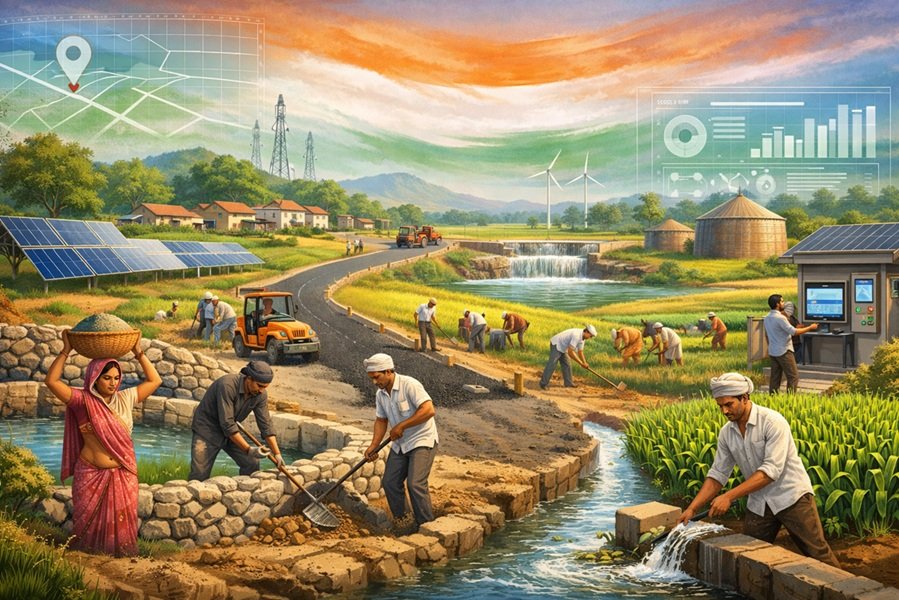
The Purchasing Managers’ Index (PMI) is an indispensable tool for assessing the economic health of a country’s manufacturing sector. For India, a rapidly industrializing economy, the Manufacturing PMI serves as a vital indicator of growth, productivity, and sectoral momentum. In this article, we will delve into the concept of the Manufacturing PMI, its significance, trends in India, and its implications for the broader economy.
Understanding the Manufacturing PMI
The Manufacturing PMI is a survey-based economic indicator designed to gauge the performance of the manufacturing sector. It is compiled based on responses from purchasing managers in manufacturing companies and reflects changes in metrics such as new orders, output, employment, suppliers’ delivery times, and inventory levels. The PMI is presented as a numerical index, with a score above 50 indicating expansion and below 50 signaling contraction.
The index is further broken down into key components:
- New Orders: Reflecting demand for manufactured goods.
- Production: Indicating the level of output.
- Employment: Tracking changes in workforce numbers.
- Supplier Delivery Times: Measuring the efficiency of supply chains.
- Stocks of Purchases: Representing inventory levels.
A rise or fall in the PMI has significant implications for policymakers, investors, and businesses as it provides an early signal of economic activity.
The Evolution of India’s Manufacturing PMI
India’s Manufacturing PMI is compiled and published monthly by S&P Global (formerly IHS Markit). Since its introduction, the PMI has become a reliable barometer of the sector’s health. It complements other economic indicators such as the Index of Industrial Production (IIP) and GDP growth data.
Historical Trends
- Pre-Pandemic Growth (2015-2019): During this period, India’s Manufacturing PMI generally remained above the 50-mark, indicating consistent growth. This was fueled by government initiatives such as “Make in India,” increased foreign direct investment (FDI), and a robust domestic market.
- Pandemic Disruption (2020-2021): The COVID-19 pandemic brought unprecedented challenges. The PMI plummeted to historic lows of 27.4 in April 2020 as lockdowns disrupted supply chains, halted production, and dampened demand. However, the recovery was swift, aided by fiscal stimulus and a gradual reopening of the economy.
- Post-Pandemic Recovery (2022-Present): In recent years, the PMI has shown resilience, often crossing the 55-mark, driven by strong domestic demand, export growth, and government support for key sectors like electronics, automotive, and textiles. The push for self-reliance through the “Atmanirbhar Bharat” initiative has further bolstered the manufacturing sector.
Key Drivers of India’s Manufacturing PMI
Several factors influence the PMI, reflecting both domestic and global dynamics:
- Domestic Demand: The growing middle class and increasing urbanization in India drive demand for consumer goods, automobiles, and housing, directly impacting manufacturing activity.
- Export Markets: India’s integration into global supply chains and rising exports, particularly in sectors like pharmaceuticals, textiles, and IT hardware, contribute to PMI trends.
- Policy Initiatives: Programs like “Make in India,” production-linked incentive (PLI) schemes, and infrastructure development projects have significantly boosted manufacturing capacity and competitiveness.
- Global Economic Conditions: The PMI is sensitive to global trade dynamics, raw material prices, and geopolitical events. For instance, disruptions in global supply chains or trade wars can negatively affect the PMI.
- Input Costs: Changes in raw material costs, energy prices, and currency fluctuations directly impact manufacturers’ margins and operational efficiencies.
Recent Performance of India’s Manufacturing PMI
In recent months, India’s Manufacturing PMI has consistently remained above 55, signaling robust expansion. This performance can be attributed to several factors:
- Strong Domestic Consumption: Increased spending during festivals and a rebound in discretionary purchases.
- Export Growth: Rising demand for Indian goods in markets like the US, Europe, and Southeast Asia.
- Improved Supply Chains: Easing of global bottlenecks and better availability of inputs.
However, challenges remain, such as global economic uncertainty, inflationary pressures, and interest rate hikes that may temper growth.
Implications of the PMI for India’s Economy
- Policy Formulation: The PMI provides real-time insights that help policymakers gauge economic momentum and make informed decisions regarding fiscal and monetary measures.
- Investor Confidence: A strong PMI often correlates with positive investor sentiment, influencing equity markets and FDI inflows.
- Employment Trends: As a proxy for job creation in the manufacturing sector, the PMI is closely watched for its implications on employment levels.
- Sectoral Growth: The PMI highlights which manufacturing sub-sectors are thriving or struggling, aiding in targeted policy interventions.
- Economic Forecasting: Economists and analysts use PMI data to predict GDP growth and assess the broader economic outlook.
The Road Ahead
As India aspires to become a global manufacturing hub, the PMI will remain a critical metric for tracking progress. Continued efforts to enhance infrastructure, improve ease of doing business, and promote innovation will be essential to sustaining high PMI levels. Additionally, adapting to global trends like green manufacturing and digital transformation will be key.
In conclusion, India’s Manufacturing PMI is not just a reflection of the sector’s current state but also a window into the future trajectory of the economy. By fostering a conducive environment for manufacturing growth, India can ensure that its PMI remains robust, driving sustained economic development and prosperity.





